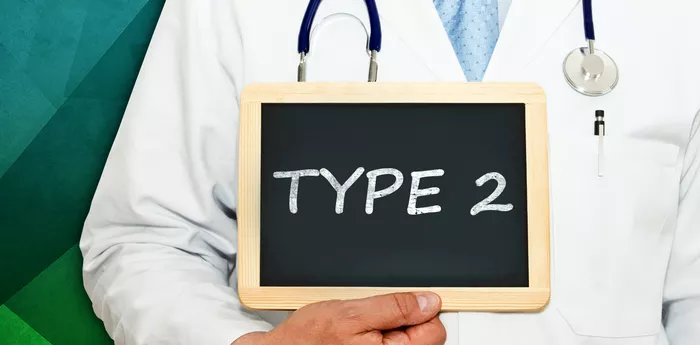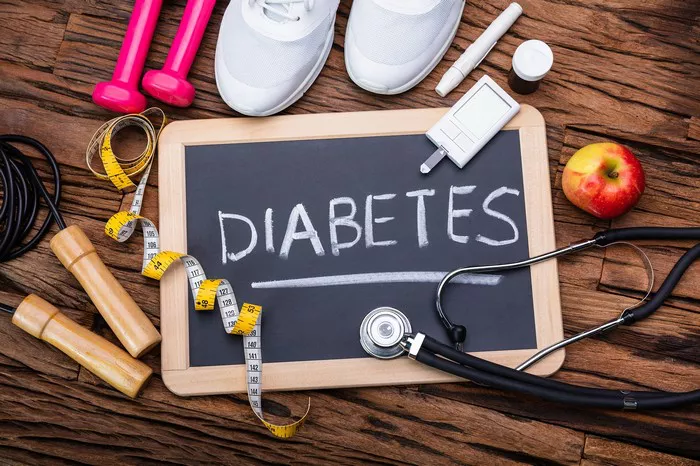Type 2 diabetes is a chronic metabolic disorder characterized by high blood glucose levels resulting from insulin resistance and relative insulin deficiency. It is one of the most common types of diabetes and can have significant long-term health impacts if not diagnosed and managed early. Recognizing the first warning signs of type 2 diabetes is crucial for early intervention, which can prevent or delay the onset of more severe complications. This comprehensive article explores the initial warning signs of type 2 diabetes, their implications, and the importance of timely medical evaluation and management.
Understanding Type 2 Diabetes
Type 2 diabetes is a condition where the body becomes resistant to insulin or the pancreas fails to produce sufficient insulin to maintain normal blood glucose levels. Unlike type 1 diabetes, which often presents in childhood or early adulthood and is characterized by autoimmune destruction of insulin-producing beta cells, type 2 diabetes generally develops gradually and is more common in adults. However, it is increasingly being diagnosed in younger individuals due to rising obesity rates and lifestyle factors.
Risk Factors for Type 2 Diabetes
Before delving into the warning signs, it is essential to understand the risk factors associated with type 2 diabetes. These include:
Genetics: Family history of diabetes increases the risk.
Obesity: Excess body weight, particularly abdominal fat, is a significant risk factor.
Sedentary Lifestyle: Lack of physical activity contributes to insulin resistance.
Unhealthy Diet: Diets high in refined sugars, unhealthy fats, and low in fiber are linked to diabetes.
Age: Risk increases with age, particularly after 45.
Ethnicity: Certain ethnic groups, such as African American, Hispanic, Native American, and Asian American, are at higher risk.
Gestational Diabetes: Women who had gestational diabetes during pregnancy are at higher risk of developing type 2 diabetes later in life.
Polycystic Ovary Syndrome (PCOS): Women with PCOS are at an increased risk of developing type 2 diabetes.
Early Warning Signs of Type 2 Diabetes
Identifying the early warning signs of type 2 diabetes can lead to prompt diagnosis and management, which can significantly reduce the risk of complications. Here are some of the most common early symptoms:
Increased Thirst and Frequent Urination
One of the earliest symptoms of type 2 diabetes is increased thirst (polydipsia) and frequent urination (polyuria). As blood glucose levels rise, the kidneys attempt to remove the excess sugar by producing more urine. This increased urine production can lead to dehydration, causing excessive thirst.
Mechanism: High blood sugar levels cause the kidneys to filter more glucose from the blood. As glucose is excreted in urine, it pulls water along with it, leading to increased urination and subsequent dehydration.
Implications: Persistent thirst and frequent urination can be a sign that blood glucose levels are not being properly regulated, indicating possible diabetes.
Fatigue
Feeling unusually tired or fatigued is a common early symptom of type 2 diabetes. This fatigue occurs because cells are not receiving the glucose they need for energy due to insulin resistance.
Mechanism: Insulin resistance prevents glucose from entering cells, leading to lower energy levels and overall fatigue.
Implications: Persistent tiredness or lethargy despite adequate rest and sleep may indicate underlying glucose metabolism issues.
Unexplained Weight Loss
While type 2 diabetes is often associated with weight gain, some individuals may experience unexplained weight loss. This can occur when the body starts to use muscle and fat stores for energy due to inadequate glucose uptake.
Mechanism: Insulin resistance causes the body to break down fat and muscle for energy, leading to weight loss despite normal or increased appetite.
Implications: Sudden or unexplained weight loss should be evaluated to rule out diabetes or other metabolic disorders.
Increased Hunger
Increased hunger (polyphagia) is another symptom that can indicate type 2 diabetes. Despite eating regular meals, individuals may feel excessively hungry due to poor glucose utilization by cells.
Mechanism: Insulin resistance prevents glucose from entering cells, leading to persistent hunger as the body attempts to compensate for the lack of available energy.
Implications: Frequent hunger and overeating may be a sign that the body is not processing glucose effectively, warranting further investigation.
Blurred Vision
Blurry vision is a common symptom of type 2 diabetes, resulting from high blood sugar levels affecting the lenses of the eyes. Elevated glucose levels can cause fluid to be pulled from the eye lenses, affecting their ability to focus.
Mechanism: Hyperglycemia causes fluid imbalances in the eyes, leading to swelling and changes in lens shape, which impairs vision.
Implications: Persistent blurred vision or difficulty focusing should be evaluated, especially if accompanied by other diabetes symptoms.
Slow-Healing Sores or Frequent Infections
People with type 2 diabetes often experience slow-healing sores and frequent infections. Elevated blood sugar levels can impair the immune system, making it more difficult for the body to heal wounds and fight infections.
Mechanism: High blood glucose levels can weaken the immune response and reduce blood flow to affected areas, impairing healing.
Implications: Slow recovery from cuts, wounds, or frequent infections may indicate compromised immune function due to diabetes.
Dark Skin Patches
A condition called acanthosis nigricans, characterized by dark, velvety patches of skin, particularly around the neck, armpits, or groin, can be an indicator of insulin resistance.
Mechanism: High levels of insulin in the blood can lead to increased pigmentation and thickening of the skin.
Implications: The presence of dark patches in these areas can be a visible sign of insulin resistance and potential type 2 diabetes.
Diagnosis and Testing
If you suspect you are experiencing early warning signs of type 2 diabetes, it is crucial to seek medical evaluation. Diagnosis typically involves several tests to confirm high blood glucose levels and assess overall metabolic health.
Fasting Plasma Glucose Test
This test measures blood glucose levels after an overnight fast. A fasting blood glucose level of 126 mg/dL (7.0 mmol/L) or higher indicates diabetes.
Oral Glucose Tolerance Test (OGTT)
The OGTT measures blood glucose levels before and after consuming a glucose-rich drink. A blood glucose level of 200 mg/dL (11.1 mmol/L) or higher two hours after drinking the solution indicates diabetes.
Hemoglobin A1c Test
The A1c test measures average blood glucose levels over the past two to three months. An A1c level of 6.5% or higher is diagnostic for diabetes.
Random Plasma Glucose Test
This test measures blood glucose levels at any time of the day, regardless of when the individual last ate. A random blood glucose level of 200 mg/dL (11.1 mmol/L) or higher suggests diabetes.
Management and Prevention
Early diagnosis and management of type 2 diabetes are crucial for preventing complications and improving quality of life. Effective management includes lifestyle changes, medication, and regular monitoring.
Lifestyle Modifications
Diet: Adopting a balanced diet rich in whole grains, fruits, vegetables, lean proteins, and healthy fats can help regulate blood glucose levels. Reducing intake of refined sugars and processed foods is also important.
Physical Activity: Engaging in regular physical activity, such as walking, cycling, or swimming, helps improve insulin sensitivity and blood glucose control.
Weight Management: Achieving and maintaining a healthy weight can significantly reduce the risk of developing type 2 diabetes and improve overall metabolic health.
Medications
For individuals diagnosed with type 2 diabetes, medications may be prescribed to help manage blood glucose levels. Commonly used medications include:
Metformin: Helps reduce glucose production in the liver and improve insulin sensitivity.
Sulfonylureas: Stimulate the pancreas to release more insulin.
GLP-1 Receptor Agonists: Enhance insulin secretion and suppress appetite.
SGLT2 Inhibitors: Prevent glucose reabsorption in the kidneys, leading to increased glucose excretion.
Regular Monitoring
Regular monitoring of blood glucose levels is essential for managing diabetes and preventing complications. This includes:
Home Blood Glucose Monitoring: Using a glucometer to check blood sugar levels regularly.
A1c Testing: Regular A1c tests to assess long-term blood glucose control.
Medical Check-ups: Regular visits to healthcare providers to monitor overall health and adjust treatment as needed.
Education and Support
Education plays a vital role in managing diabetes and preventing complications. Individuals with or at risk of type 2 diabetes should:
Learn About Diabetes: Understand the condition, its management, and potential complications.
Develop a Care Plan: Work with healthcare providers to create a personalized care plan.
Join Support Groups: Engage with diabetes support groups or online communities for additional resources and encouragement.
See also: How Long Does Hypoglycemia Last After Eating?
Conclusion
Recognizing the first warning signs of type 2 diabetes is crucial for early diagnosis and intervention. Symptoms such as increased thirst, frequent urination, fatigue, unexplained weight loss, increased hunger, blurred vision, slow-healing sores, and dark skin patches can indicate the onset of diabetes. Early evaluation and management, including lifestyle changes, medication, and regular monitoring, can significantly improve outcomes and prevent complications. Education and support are essential components of effective diabetes management, empowering individuals to take control of their health and well-being. If you experience any of these symptoms or are at risk for type 2 diabetes, seek medical advice promptly to ensure timely and appropriate care.
Related topics:
What Are the Long-Term Effects of Type 1 Diabetes?


























